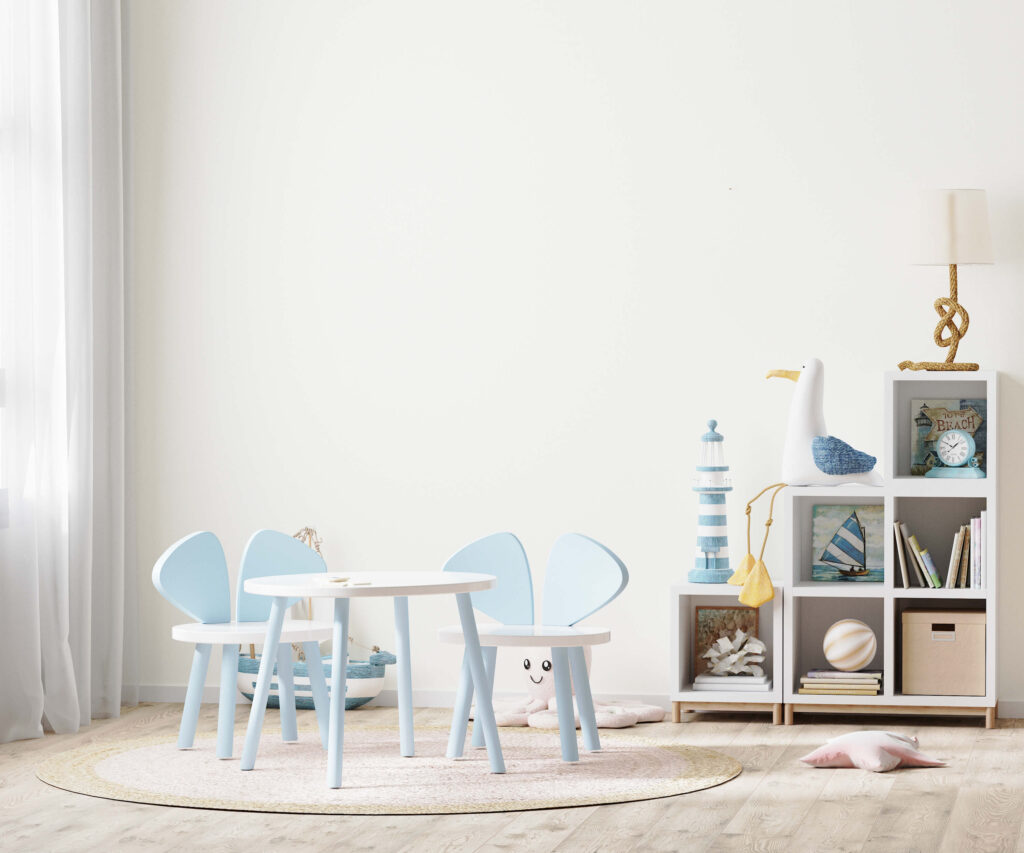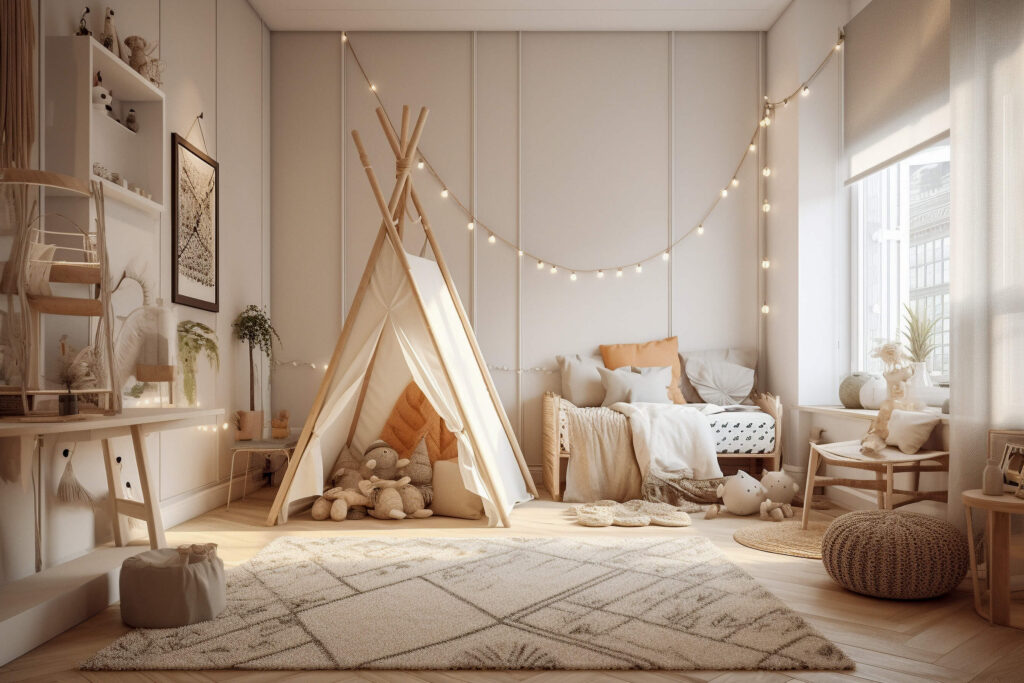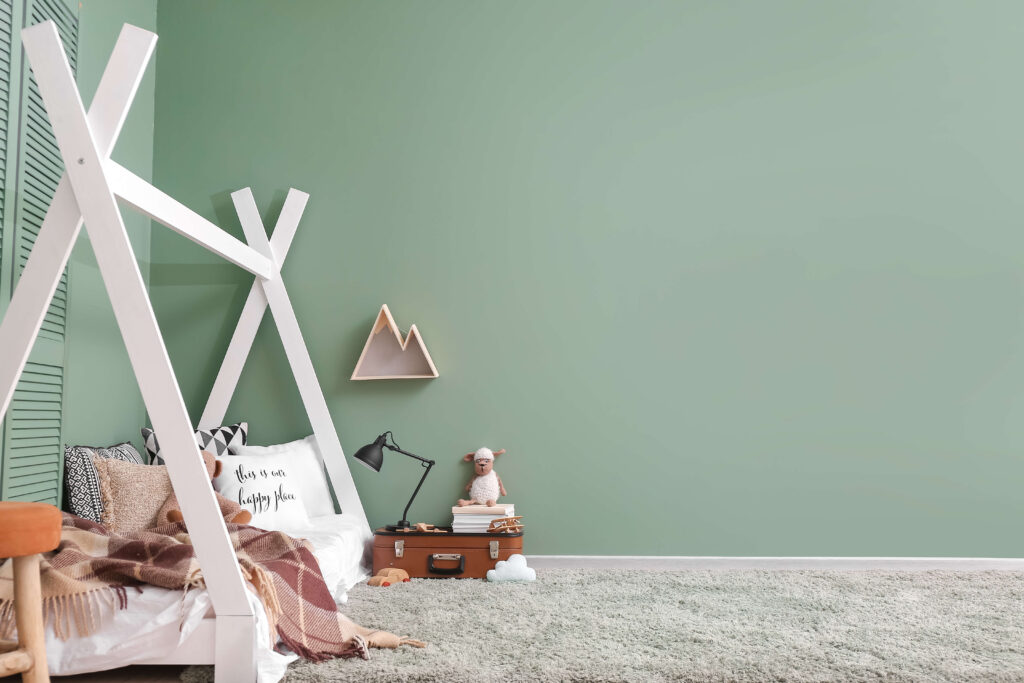A child’s room is more than just a space for sleeping; it’s a sanctuary of imagination, a place where dreams take flight, and where little personalities can truly shine.
At Lider, we want to help guide you through the exciting process of creating captivating and functional rooms for the young ones in your life. We know how important it is to keep the area fun and interesting for the kids, but functional enough to be easy to organize and tidy up.
Designing a kids’ room is an exciting and creative endeavor. From vibrant color palettes to clever storage solutions, from whimsical themes to practical design tips, join us as we explore the endless possibilities.
Here are some tips to help you create a space that is both functional and inspiring for the little ones:
1. Embrace Their Interests
Incorporate elements that reflect your child’s interests, hobbies, or favorite characters. Whether it’s a sports theme, a princess palace, or a space adventure, aligning the room’s design with their passions will make it a special place for them.
Allowing them to have a say in their space empowers them and helps create a sense of ownership and pride. Let them choose elements like bedding, wall art, or accessories.
2. Optimize Storage
Kids accumulate toys, books, and belongings quickly. Invest in smart storage solutions like cube shelves, bins, and baskets to keep the room organized and clutter-free. Designate specific areas for different types of items to make it easier for your child to clean up independently.
3. Create Zones
Divide the room into distinct zones based on different activities. Have a designated play area with comfortable rugs or mats, a study corner with a desk and chair, and a cozy reading nook with a bookshelf. This division of space will help promote focus and encourage various interests.
4. Use Vibrant Colors
Bright and cheerful colors can stimulate creativity and energy. Incorporate a playful color palette through painted walls, bedding, curtains, or accessories. Consider using removable decals or wallpaper for easy updates as your child’s tastes evolve.
5. Encourage Self-Reliance/Independence
It’s a big world out there, which can be scary and frustrating as children try to explore. Incorporating Montessori philosophy into interior design is a wonderful way to create an environment that fosters children’s independence, curiosity, and a love for learning. Inspired by the educational principles developed by Maria Montessori, Montessori-inspired spaces are designed to be child-centered, organized, and aesthetically pleasing.
The philosophy prioritizes making the area accessible to children. Low shelves and accessible storage solutions allow children to independently choose and return materials, promoting a sense of order and responsibility. Montessori-style beds are also a great way to encourage this independence. Because the bed is designed low to the ground, children can enter and exit without adult assistance.
Natural materials, such as wood and fabrics, are often utilized to create a calm and soothing atmosphere. Thoughtful placement of furniture and materials encourages movement and exploration, while minimalistic and uncluttered spaces provide a sense of calm and focus.
6. Prioritize Safety
Ensure that the room is safe for your child to navigate independently. Anchor heavy furniture to the walls and choose childproof window coverings. Avoid sharp edges and choose non-toxic materials for furniture and decor items.
Tamper-resistant outlets are the way to go for a kid’s room. At Lider, all of our receptacles feature tamper-resistant technology with spring-loaded shutters which prohibits unwanted objects from being inserted. The shutters remain closed until the proper two-pronged plug is inserted.
Guide light switches or outlets are also a great addition to child safety. They can prevent falls and help provide a path for them in the dark. The spot of light on these devices can also act as a night light so they feel safe.
7. Foster Creativity
Include spaces that inspire imaginative play and creativity. Set up an art corner with an easel and art supplies, or a dress-up area with costumes and a mirror. Display their artwork or creations to celebrate their accomplishments.
8. Consider Future Needs
Kids grow quickly, so plan for versatility in the room’s design. Invest in furniture that can adapt as they age, such as convertible cribs that transform into toddler beds, or desks that can adjust in height. Choose timeless decor pieces that can transition with their changing interests.
Remember, designing a kids’ room is all about creating a space that nurtures their individuality, sparks their imagination, and supports their growth. We hope this helped.
Happy designing!




